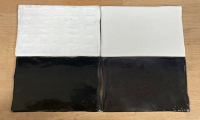Accept
Details & settings
This website uses cookies for cookie consent and statistics.

This project is based on engineering the albedo of roofs and other artificial structures with thermochromic and white pigments in order to reduce global warming, limit energy consumption and improve the urban microclimate.
The hotter our planet gets, the darker it becomes, due to reducing snowfall at our latitudes and the melting of glaciers. These white areas make or made a significant contribution to the reflection of sunlight. Their loss speeds up global warming, as the white surfaces are replaced with darker surfaces that absorb more light. A credible idea of how these white surfaces could be replaced would be a significant contribution towards preventing further global warming.
It would be possible to transform urban areas into white surfaces that reflect sunlight in order to combat climate change. Therefore, our project focuses on increasing the albedo of roofs. The basic idea is to use the thermochromic effect to make roofs white when it is hot and black when it is cold. The roofs shall be white on warm summer days, so that they reflect sunlight back to space when the light intensity is high, preventing overheating of house, city and planet. The roofs shall be black during the cold winter, so that they absorb sunlight and contribute to warming of the house and its surroundings, which reduces the energy consumption for heating.
Using a model house, we were able to show that white, infrared-reflecting and thermochromic roofs heat up much less than conventional dark roofs. This implies the opportunity to realize sustainable roofs.
Heating accounts for more than two thirds of the energy consumption of private households in Germany. Thermochromic roofs that reflect sunlight when it is hot (summer) and absorb sunlight when it is cold (winter) can reduce summer temperatures and increase winter temperatures without energy consumption and without energy costs.
Summer temperatures in cities can exceed those of surrounding areas by 10-15°C. Thermochromic roofs, roads and sidewalks (etc.) could improve the urban microclimate by heating cities during the winter and cooling them during the summer.
Humanity is trying to limit global warming to 1.5 °C. White and infrared-reflecting surfaces are the best substitute for snow, and if all developed land was used the global temperature could be reduced by about 1°C.
Within this project, we aim to prove these ideas and to demonstrate how they can help address major global challenges.